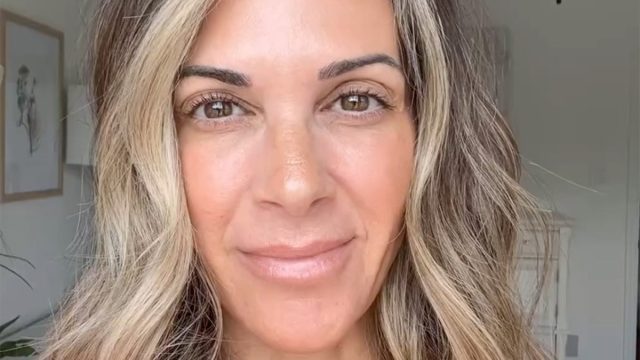This Nutritionist Lost 15 Pounds and Kept It Off After 40 with These 10 Diet Hacks

Are you struggling to lose weight in perimenopause? Just because you are over 40 doesn't mean that achieving your body goals is impossible. Trish Koeslag is a women's nutrition and fitness coach whose mission is to help women over 40 simplify macros and movement to lose weight. In a new social media post, she unveils her weight loss secrets through tips. "10 proven diet tips to lose 15 pounds if you're in perimenopause," she writes. "Are you ready to make this the year where you put yourself first? If the answer is 'hell yes' then LFG."
Calculate Your Macros
Start by calculating your macros. Use a macro calculator "and follow your maintenance calories by tracking your food for 2 weeks (be honest!)" she writes.
Get Yourself in a Deficit
Next, get yourself in a deficit. "After 2 weeks of consistency use my macro calculator to create a 15% deficit if you haven't seen any fat loss progress with your maintenance calories (progress looks like the scale dropping, inches dropping, clothes fitting better, energy improvements, strength in the gym…)" she continues.
Eat More Protein
Amp up your protein intake. "Aim for 30g of protein per meal and space out your meals every 3-4 hours," she says. According to clinical trials, consuming more protein than the recommended dietary allowance not only reduces body weight (BW), but also enhances body composition by decreasing fat mass while preserving fat-free mass (FFM) in both low-calorie and standard-calorie diets.
Eat Whole Foods 90 Percent of the Time
Trish recommends staying away from processed foods and filling your plate with clean, nutritious options – most of the time. "Choose 90% whole foods – add lots of veggies to your meals (half your plate)" she writes.
RELATED: This Is Exactly How to Lose Body Fat This Year
Hydrate
Next, hydrate. "Drink 3L of water + electrolytes (I use LMNT)" she writes. According to the Mayo Clinic, hydration is essential for various reasons. Water helps eliminate waste through urination, perspiration, and bowel movements, keeps your temperature regular, lubricates and cushions joints, and helps protect sensitive tissues.
Track Everything You Eat
Don't forget to track everything you eat to keep yourself accountable. "Track your food in an app (eyeballing does not work, you'll have to weigh your food in grams) – I have used my fitness pal, MM+ and Cronometer, any app will do," she says.
Walk 10,000 Steps Per Day
Make sure to get your steps in. "Work your way up to 10K steps per day (get outside for a walk everyday)" she says. A 2018 study published in the journal Obesity found a link between walking 10,000 steps a day and weight loss and weight management. Other studies published by the Journal of American Medical Association (JAMA) in JAMA Neurology and in JAMA Internal Medicine also linked walking 10,000 steps a day to less dementia and less cardiovascular disease overall, with less heart disease, less heart failure and fewer strokes.
RELATED: 12-3-30 Walking Method: 20 Proven Tips to Lose Weight Faster
Lift Weights
Strength training is also crucial for weight loss. "Start lifting weights: aim for 3 full body days or 4 days of 2 upper + 2 lower days," she urges. According to the Mayo Clinic, strength and weight training help reduce body fat, preserve and increase lean muscle mass, and burn calories more efficiently. Strength training may also help you:
- Develop strong bones
- Manage your weight
- Enhance your quality of life
- Manage chronic conditions
- Sharpen your thinking skills.
Get Enough Sleep
You also need to rest. "Sleep sleep sleep (this WILL make or break you)" she says. What are the health benefits of sleep? According to the Sleep Foundation, getting enough z's is a mood booster, promotes heart health, regulates blood sugar, improves mental function, restores your immune system, helps relieve stress, and aids in weight loss.
Stay in Your Own Lane
Lastly, don't pay attention to everyone else. "Stay in your own damn lane!! Who cares what everyone else is doing!" And if you enjoyed this article, take advantage of these 15 Quick Ways to Lose Body Fat Percentage in a Week.




